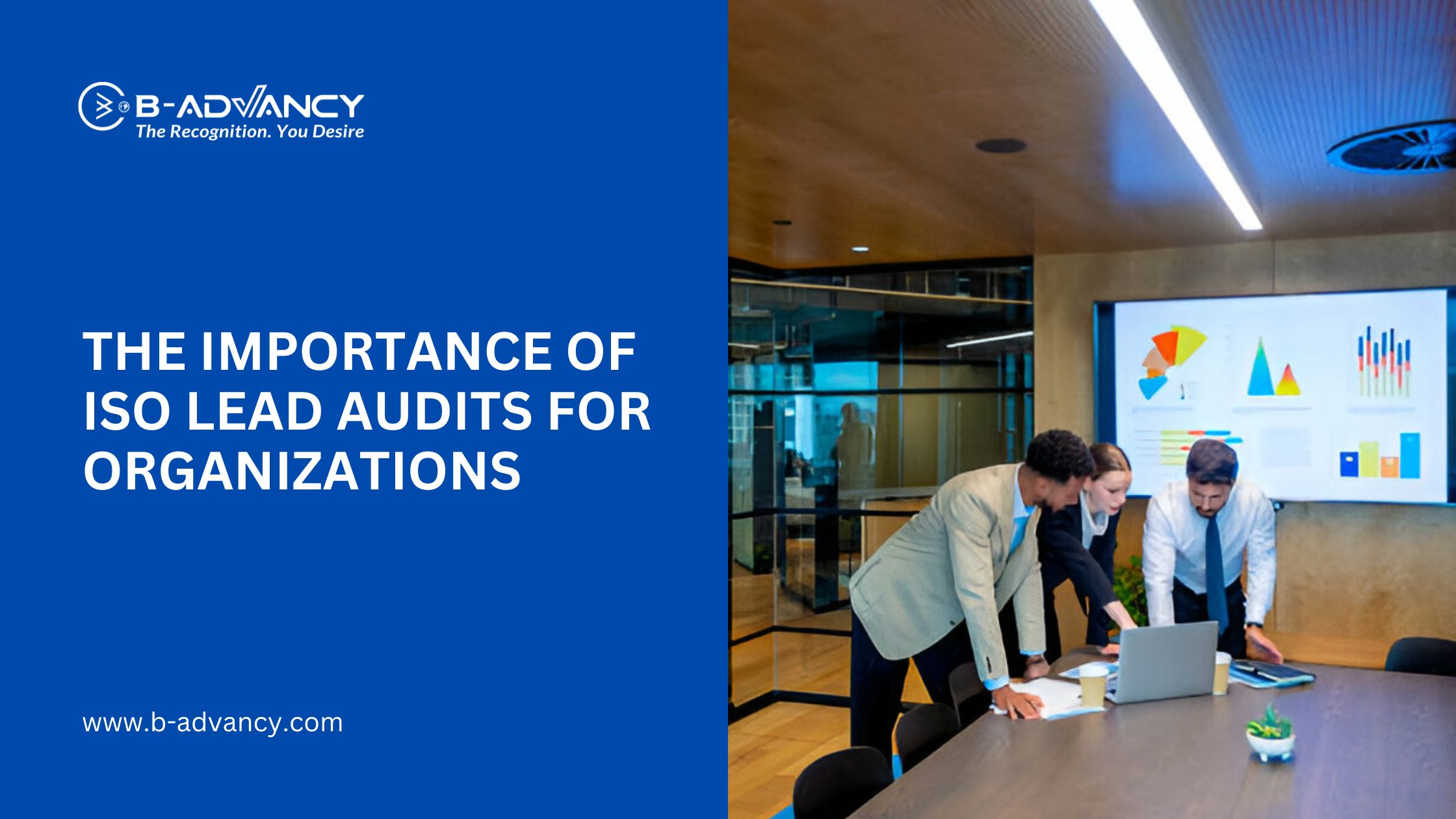
In today's global marketplace, maintaining high standards of quality, safety, and efficiency is critical for organizational success. According to the International Organization for Standardization (ISO), over 1.6 million companies worldwide hold ISO 9001 certification, a testament to the growing emphasis on standardized quality management systems. ISO certifications are not just about adhering to a set of guidelines; they represent a commitment to continuous improvement and excellence.
The International Organization for Standardization (ISO) is an independent, non-governmental international body that develops and publishes standards to ensure the quality, safety, efficiency, and interoperability of products, services, and systems. ISO standards are globally recognized and serve as a framework for organizations to ensure they meet customer and regulatory requirements.
ISO Lead Audits are pivotal in maintaining and improving the quality and efficiency of organizational processes. This blog will explore the nature of ISO Lead Audits, their benefits, preparation, the audit process, post-audit actions, and real-life examples of successful implementations.
An ISO Lead Audit is a comprehensive examination conducted by a certified lead auditor to evaluate an organization's adherence to ISO standards. This audit assesses the effectiveness of an organization's management system and ensures compliance with ISO requirements.
The lead auditor plays a crucial role in the ISO auditing process. Their responsibilities include planning and conducting the audit, leading the audit team, evaluating the effectiveness of the management system, identifying areas for improvement, and reporting the findings. A lead auditor must possess a deep understanding of ISO standards, excellent analytical skills, and the ability to communicate effectively with stakeholders.
ISO standards cover a wide range of industries and organizational needs. Some of the most relevant standards include:
ISO 9001: Quality Management Systems
ISO 14001: Environmental Management Systems
ISO 27001: Information Security Management Systems
ISO 45001: Occupational Health and Safety Management Systems
ISO 22000: Food Safety Management Systems
ISO Lead Audits ensure that organizations adhere to established quality standards, resulting in consistent and high-quality products and services. This adherence helps in meeting customer expectations and enhancing customer satisfaction.
Regular audits help organizations streamline their processes by identifying inefficiencies and waste. By addressing these issues, companies can optimize their operations, reduce costs, and increase overall productivity.
Audits play a crucial role in identifying potential risks and vulnerabilities within an organization's processes. By proactively addressing these risks, companies can prevent issues before they arise and maintain a safer and more reliable operational environment.
Compliance with international regulations and standards is critical for businesses operating in global markets. ISO Lead Audits ensure that organizations meet these regulatory requirements, minimizing the risk of legal issues and enhancing their credibility and reputation.
Conducting internal audits before an external lead audit is essential. Internal audits help organizations identify and rectify issues, ensuring they are well-prepared for the formal audit. This practice also promotes a culture of continuous improvement and readiness.
Proper documentation and organized records are vital for a successful ISO Lead Audit. Organizations should maintain comprehensive records of their processes, procedures, and performance metrics to demonstrate compliance with ISO standards.
Employees must be well-versed in ISO standards and their implementation. Regular training sessions ensure that staff members understand their roles in maintaining the management system and are prepared to contribute effectively during the audit process.
The audit process begins with an initial meeting between the lead auditor and the organization. During this meeting, the auditor outlines the audit objectives, scope, and criteria, and the organization provides an overview of its management system.
The auditor creates an audit plan detailing the activities, timelines, and resources required for the audit. This plan includes the schedule for on-site visits, interviews, observations, and document reviews.
During the on-site audit, the auditor evaluates the organization's processes and practices through interviews, observations, and document reviews. This assessment helps the auditor determine whether the organization complies with the ISO standards.
After the on-site audit, the auditor prepares an audit report outlining the findings, including areas of non-conformity and opportunities for improvement. This report serves as a basis for the organization to implement corrective actions.
Organizations must address any non-conformities identified during the audit promptly. This involves investigating the root causes, implementing corrective actions, and documenting the changes to prevent recurrence.
Using audit findings for continuous improvement is crucial for maintaining ISO certification. Organizations should regularly review their processes, address identified issues, and strive for ongoing enhancements to their management system.
Follow-up audits are necessary to ensure that corrective actions have been effectively implemented. These audits help verify that the organization has addressed the non-conformities and is maintaining compliance with ISO standards.
Many organizations have benefited from ISO Lead Audits. For example, a manufacturing company that implemented ISO 9001 saw a significant reduction in product defects and customer complaints, leading to increased customer satisfaction and business growth.
Common mistakes during the audit process include inadequate preparation, poor documentation, and lack of employee involvement. To avoid these pitfalls, organizations should conduct thorough internal audits, maintain comprehensive records, and ensure staff are well-trained and engaged in the process.
ISO Lead Audits are instrumental in helping organizations maintain high standards of quality, efficiency, and compliance. By understanding the audit process, preparing adequately, and addressing findings proactively, companies can leverage these audits for continuous improvement and long-term success. Embracing ISO standards not only enhances organizational performance but also builds trust and credibility with customers and stakeholders, paving the way for sustainable growth and competitiveness in the global market.